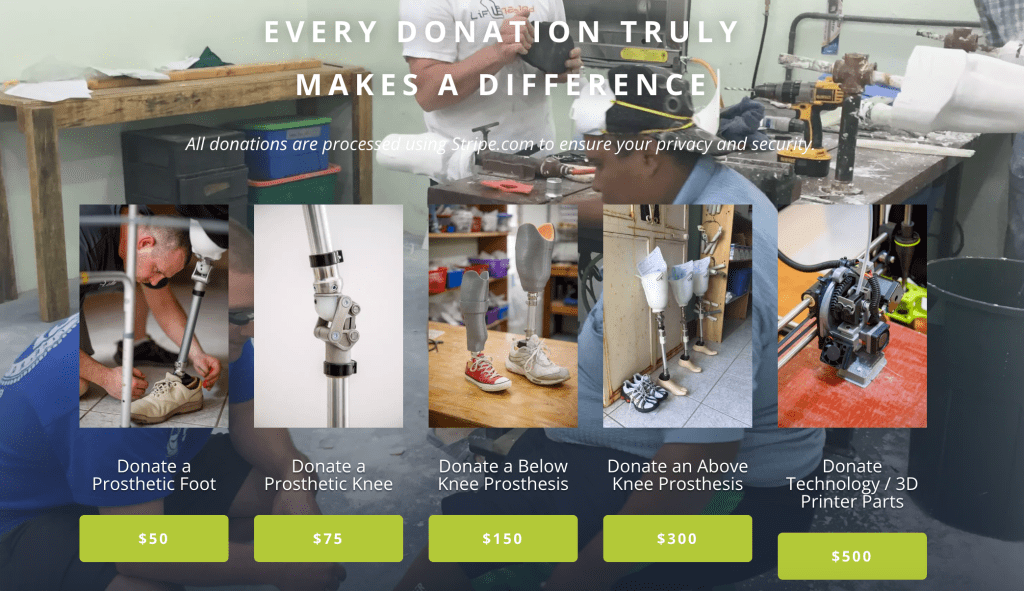A Journey to Digital Prosthetics
Interview with Brent Wright of LifeNabled
In this interview, Brent Wright, a prosthetist and innovator at LifeNabled and EastPoint Prosthetics & Orthotics, shares how LifeNabled has evolved since its founding in 2006, influencing the future of prosthetic design and fabrication.
Brent explains the challenges encountered in underserved communities and how these experiences led to advancements in computational design and 3D printing, transforming the production of custom prosthetics.
Discussing the development of automated workflows that integrate scanning, parametric design, and advanced materials to create highly personalized prosthetic devices.
Brent will be presenting his work at CDFAM Computational Design Symposium in NYC, October 2-3, 2024, register to attend to connect with experts in computational design at all scales and applications.
How has LifeNabled evolved since its inception in 2006 and its influence on prosthetic design at EastPoint Prosthetics & Orthotics?
LifeNabled began in 2006 with the mission of providing prosthetic care to underserved populations in developing countries. Over the years, it has grown from a small outreach program to a fully established organization that offers personalized prosthetic devices to people in need, particularly those in Guatelmala.
This work exposed us to unique challenges, such as a lack of consistent access to traditional fabrication materials and tools, which prompted us to explore new methods for designing and producing prosthetics.
The insights gained from working in these environments directly influenced our practice at EastPoint Prosthetics & Orthotics.
By adapting computational design tools and integrating 3D printing, we could rapidly iterate and produce custom devices with less material waste and more design flexibility.
This work created a feedback loop; the lessons learned in resource-limited settings informed innovations in our regular practice, and advancements made in our clinic improved the care we could provide through LifeNabled.
Impact of additive manufacturing on custom prosthetics design and fabrication:
The integration of additive manufacturing has revolutionized how we approach prosthetic design and fabrication.
Traditional prosthetic manufacturing involves labor-intensive processes with numerous steps that can introduce errors or inconsistencies. Additive manufacturing allows us to bypass many of these steps, enabling a more streamlined, precise, and customizable production process.
3D printing enables us to create complex geometries that were previously impossible or prohibitively expensive to fabricate, such as lightweight structures with intricate internal lattice designs that enhance comfort and performance. It also allows for rapid prototyping, so we can test and refine designs quickly, ultimately leading to better-fitting, more functional devices.
Workflow for automating prosthetic design and fabrication:
Our workflow combines advanced scanning technology, parametric design software, and 3D printing. Here’s an overview of how it works:
Data Acquisition: We begin by scanning the patient’s residual limb or a cast using high-resolution 3D scanning technology. This scan captures precise anatomical details, ensuring a perfect fit.
Design Automation: We’ve developed custom scripts and parametric models within CAD software that automatically adapt the design of the prosthetic socket based on the scanned data. This automation reduces the time required for manual adjustments and ensures a consistent output tailored to each patient’s unique needs.
Simulation and Validation: The lower part of the socket is the part that takes the most force. We have engineered that design and performed physical testing along with FEA to make sure we have a safe prosthesis. This is then used for nearly all sockets because it has been validated.
Fabrication: The final design is 3D printed using materials that are both lightweight and durable. The ability to use different materials allows us to fine-tune each prosthesis for specific activities, such as everyday use or sports.
What makes this workflow unique is its integration of fully custom automation scripts that go beyond what standard “off the shelf” software can do. It allows us to tailor every aspect of the design to the individual, which is crucial for creating truly personalized prosthetic devices.
Plans to make software tools available to other practitioners or extend them to other P&O applications:
We are actively exploring ways to make our software tools available to other practitioners.
While our current focus is on refining these tools for internal use, we recognize the potential benefits they could offer to the wider Prosthetic & Orthotic community.
We are considering partnerships or licensing opportunities that would allow others to access and use these tools, particularly those working in settings similar to LifeNabled’s outreach.
Key takeaways for practitioners attending your talk at CDFAM:
For practitioners attending my talk at CDFAM, I hope they leave with a an excitement of how technology can fundamentally improve patient outcomes in prosthetics. The future of prosthetics lies in embracing these innovations—automation, computational design, and 3D printing—to enhance precision, reduce production times, and deliver better, more accessible care. I also want to highlight the importance of thinking creatively about the application of these technologies and not being afraid to challenge traditional methods.
Insights for designers and engineers from other fields:
For those not involved directly in Prosthetics & Orthotics, I believe there’s much to learn from the patient-centered approach and the integration of technology into healthcare solutions.
The key takeaway is the importance of understanding the end-user’s needs deeply and iterating designs rapidly with the help of advanced tools.
Whether you’re designing products, systems, or solutions in any other field, the principles of customization, responsiveness, and continuous feedback can be transformative when there is collaboration between clinicians and engineers.
Requests for software developers and 3D printer manufacturers at CDFAM:
If I could ask anything of software developers and 3D printer manufacturers attending CDFAM, it would be to continue pushing the boundaries of what is possible with very clear specifications of what inputs are needed for the desired output.
By working together, we can significantly impact the lives of those who rely on these technologies, giving them the best possible outcomes.
CDFAM Computational Design Symposium brings together leading experts in computational design from industry, academia and software development for two days of knowledge sharing and networking in NYC, Oct. 2-3, 2024.






